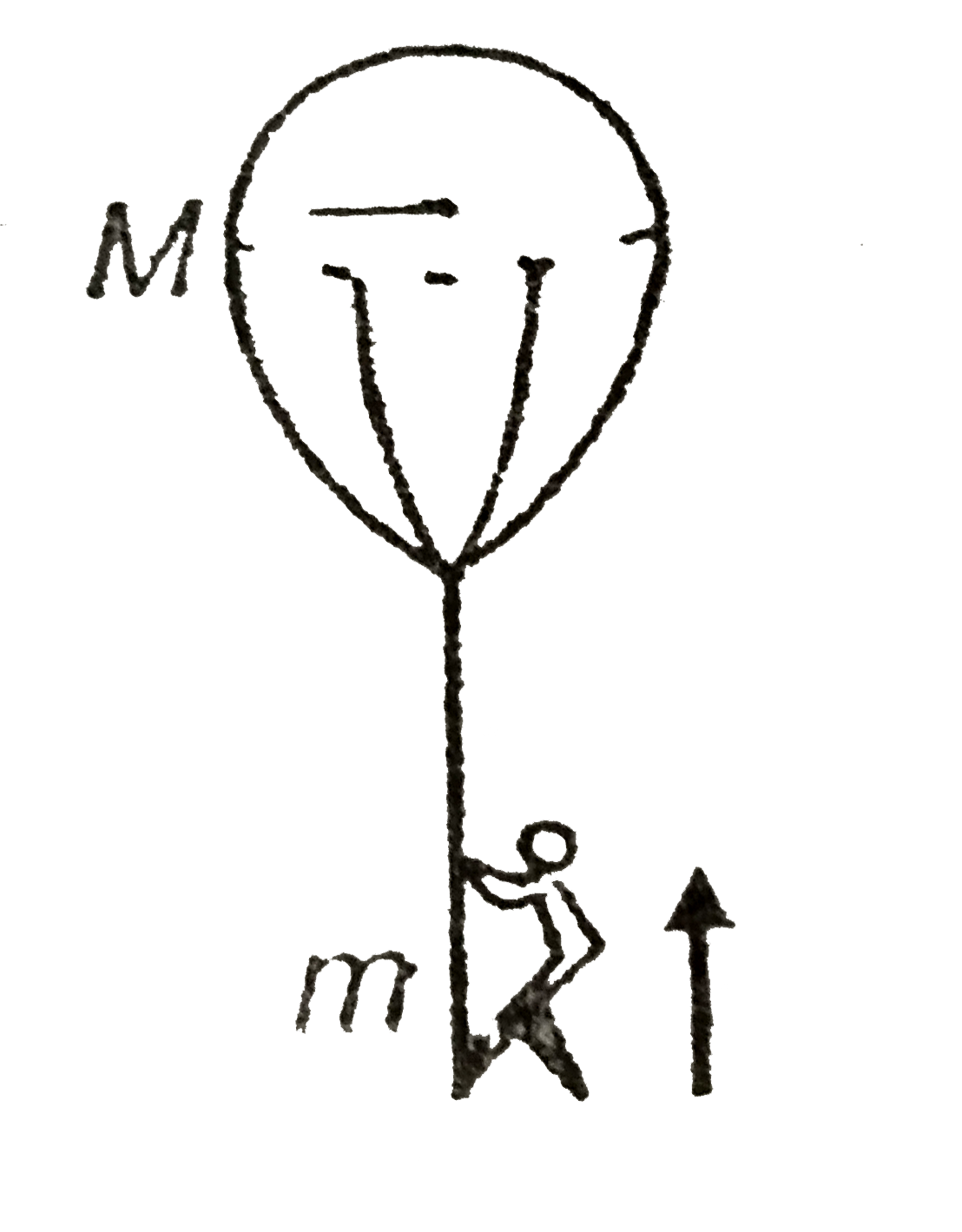A balloon of mass M is stationary in air. It has a ladder on which a man of mass m is standing. If the man starts climbing up the ladder with a velocity of relative to ladder, the velocity of balloon is
(mv)/(M) upwards
(mv)/(M+m) downwards
(mv)/(M+m) upwards
(Mv)/(M+m) downwards
The correct Answer is:B
Step by step video & image solution for A balloon of mass M is stationary in air. It has a ladder on which a man of mass m is standing. If the man starts climbing up the ladder with a velocity of relative to ladder, the velocity of balloon is by Physics experts to help you in doubts & scoring excellent marks in Class 11 exams.
Similar Questions
A man of mass m1 is standing on a platform of mass m2 kept on a smooth horizontal surface. The man starts moving on the platform with a velocity vr relative to the platform. Find the recoil velocity of platform.
View SolutionA stationary light, smooth pulley can rotate without friction about a fixed horizontal axis. A light rope passes over the pulley. One end of the rope supports a ladder with man and the other end supports a counterweight of mass M. Mass of the man is m. initially, the centre of mass of the counterweight is at a height h from that of man as shown in Fig.
If the man starts to climb up the ladder slowly, calculate work done by him to reach his centre of mass in level with that of the counterweight.
 View Solution
View Solution
Knowledge Check
- Question 1 - Select One or More
A balloon of mass m is rising up with an acceleration a.
AThe upthrust on the balloon is m(g+a).BThe upthrust on the balloon is ma.Cma/(2a+g) mass must be detached in order to double its acceleration.Dm/2 mass must be detached in order to double its acceleration. - Question 2 - Select One
A rope thrown over a pulley has a ladder with a man of mass m on one of its ends and a counter balancing mass M on its other end. The man climbs with a velocity vr relative to ladder. Ignoring the masses of the pulley and the rope as well as the friction on the pulley axis, the velocity of the centre of mass of this system is:
AmMvrBm2MvrCMmvrD2Mmvr - Question 3 - Select One or More
A man of mass m is standing on a stationary flat car of mass M. The car can move without friction along horizontal rails. The man starts walking with velocity v relative to the car. Work done by him
A(a) is greater than 12mv2 if he walks along rails.B(b) is less than 12mv2 is he walks along rails.C(c) is equal to 12mv2 is he walks normal to rails.D(d) can never be less than 12mv2
A man of mass m climbs to a rope ladder suspended below a balloon of mass M. The balloon is stationary with respect to the ground.
(a) If the man begins to climb the ladder at speed v (with respect to the ladder), in what direction and with what speed (with respect to the ground) will the balloon move?
(b) What is the state of the motion after the man stops climbing?View SolutionA man of mass m is suspended in air by holding the rope of a ballon of mass M. As the man climbs up the rope, the ballon
 View Solution
View SolutionA man of mass m1 = 80 kg is standing on a platform of mass m2 = 20 kg that lies on a frictionless horizontal surface. The man starts moving on the platform with a velocity vr = 10 m/s relative to the platform. Find the recoil speed of the platform.
View SolutionA man of mass m, standing at the bottom of the staircase of height L climbs it and stands at its top.
View SolutionA man of mass m is standing on a plank of equal mass m resting on a smooth horizontal surface. The man starts moving on the plank with speed u relative to the plank. The speed of the man relative to the ground is
 View Solution
View Solution
